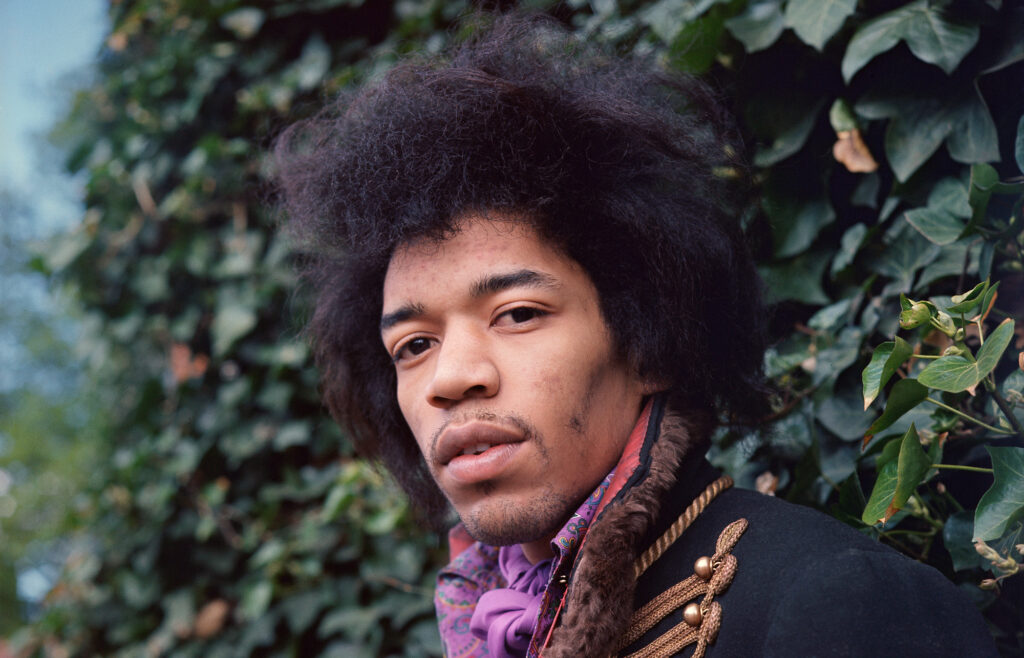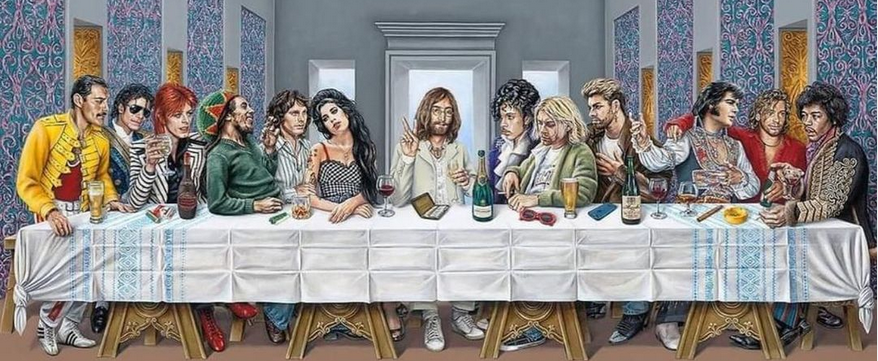
Jimi Hendrix: The Legacy of a Guitar Icon
Jimi Hendrix is widely regarded as one of the greatest and most innovative guitarists in the history of rock music. His brief but impactful career revolutionized the electric guitar’s role in popular music and left an indelible mark on the world of music, culture, and performance. From his virtuosity to his flamboyant stage presence, Hendrix broke boundaries and set new standards for what could be achieved with sound, style, and improvisation. Though his life was tragically cut short at the age of 27, his contributions to music continue to inspire musicians and captivate audiences around the world.
Early Life and Musical Roots
James Marshall Hendrix was born on November 27, 1942, in Seattle, Washington, to James Allen “Al” Hendrix and Lucille Jeter. Growing up in a turbulent household with his parents’ frequent separations and eventual divorce, Hendrix found solace in music from a young age. His love for music began when he was a child, playing broomsticks like guitars before his father bought him his first acoustic guitar when he was 15 years old. Hendrix quickly became proficient, learning to play by ear and imitating the sounds of blues, rock and roll, and rhythm and blues artists like Muddy Waters, B.B. King, and Chuck Berry.
Hendrix’s early musical experiences were largely shaped by the rich tapestry of American music. He was heavily influenced by the blues, a genre that deeply informed his playing style and became a foundation of his musical identity. He was also fascinated by the burgeoning rock and roll scene, as well as the music of gospel, jazz, and rhythm and blues artists. This eclectic range of influences would later manifest in his own music, where he effortlessly blended genres to create a unique and groundbreaking sound.
Jimi Hendrix’s teenage years saw him playing in a series of local bands, honing his skills and developing a reputation as a formidable guitarist. After dropping out of high school, he enlisted in the U.S. Army in 1961 and was stationed at Fort Campbell, Kentucky. There, he met bassist Billy Cox, and the two formed a musical partnership that would later be revived during Hendrix’s career. After being honorably discharged from the Army, Hendrix began his journey as a full-time musician, moving to Clarksville, Tennessee, where he played in various backing bands for artists like Little Richard, the Isley Brothers, and Ike & Tina Turner.
The Rise of a Rock Star: The Jimi Hendrix Experience
Despite his talent, Hendrix struggled to find success in the U.S. music scene in the early 1960s. It wasn’t until he moved to New York City and started performing in the Greenwich Village music scene that his fortunes began to change. In 1966, Hendrix caught the attention of Chas Chandler, the former bassist of the British band The Animals, who recognized his potential and brought him to London. It was there that Hendrix’s career truly took off.
In London, Hendrix formed the band the Jimi Hendrix Experience with bassist Noel Redding and drummer Mitch Mitchell. The trio quickly made a name for themselves with their explosive live performances, blending psychedelic rock with blues and jazz-infused improvisation. Hendrix’s guitar playing stood out as revolutionary, characterized by his use of feedback, distortion, and an innovative approach to the instrument that defied conventional techniques. Hendrix was left-handed but played a right-handed guitar upside down, adding a distinctive sound to his style.
The Jimi Hendrix Experience released their debut album, Are You Experienced, in 1967, which became an instant success. The album featured some of Hendrix’s most iconic tracks, including “Purple Haze,” “Hey Joe,” and “The Wind Cries Mary.” These songs not only showcased Hendrix’s virtuosity as a guitarist but also his ability to fuse various genres into a cohesive and innovative sound. The album’s experimental approach to songwriting and production, coupled with Hendrix’s stage presence and style, made him an overnight sensation in the UK and, soon after, in the U.S.
Innovative Guitar Techniques and Sound
Jimi Hendrix was a pioneer in using the electric guitar as an instrument capable of producing previously unimaginable sounds. He employed a range of techniques, from feedback and overdrive to fuzz and wah-wah pedals, that allowed him to manipulate the guitar’s tone and texture in ways that had never been done before. These innovations helped establish the electric guitar as the defining instrument of rock music in the 1960s.
One of Hendrix’s most famous performances occurred at the 1967 Monterey Pop Festival, where he set his guitar on fire during a rendition of “Wild Thing.” This dramatic moment encapsulated Hendrix’s ability to blend technical brilliance with theatrical showmanship. His ability to control feedback, his use of unorthodox chord progressions, and his improvisational skills made his performances unpredictable and exciting.
.
.
Songs like “Voodoo Child (Slight Return)” and “All Along the Watchtower” demonstrate Hendrix’s mastery of tone and technique. “Voodoo Child” features a powerful use of the wah-wah pedal, while “All Along the Watchtower,” a cover of Bob Dylan’s song, became a defining example of how Hendrix could reinterpret and transform existing music. His use of studio techniques was equally groundbreaking; he worked closely with producer Eddie Kramer to push the boundaries of what could be done in a recording studio, using techniques like backward guitar tracks, tape manipulation, and multi-tracking to create new sonic textures.
Hendrix and the Counterculture Movement
Hendrix’s rise to fame coincided with the peak of the counterculture movement of the 1960s, and he became an icon of the era’s spirit of rebellion, freedom, and experimentation. His music resonated with the political and social changes happening at the time, from the civil rights movement to the protests against the Vietnam War. His music, while not overtly political, reflected a desire for change, freedom, and self-expression that mirrored the ideals of the counterculture generation.
One of the most iconic moments of Hendrix’s career came at the Woodstock Festival in 1969. Performing to an audience of hundreds of thousands of people, Hendrix delivered a jaw-dropping rendition of “The Star-Spangled Banner,” in which he used his guitar to imitate the sounds of bombs dropping and gunfire, a powerful commentary on the ongoing Vietnam War. This performance captured the tension and disillusionment of the times, and it remains one of the most memorable moments in rock history.
The Later Years and Tragic Death
After the success of the Jimi Hendrix Experience, Hendrix sought new creative directions. He formed a new band, Band of Gypsys, which featured Billy Cox on bass and Buddy Miles on drums. The band’s sound was a departure from the psychedelic rock of the Experience, incorporating more elements of funk, soul, and blues. Hendrix was eager to experiment with different styles and was constantly evolving as a musician.
Unfortunately, Hendrix’s life was plagued by personal struggles. The pressures of fame, along with his struggles with substance abuse, began to take a toll on his mental and physical health. He continued to tour and record, but by 1970, tensions within his band and his inner circle were escalating.
On September 18, 1970, at the age of 27, Jimi Hendrix died in London. The cause of death was asphyxia, after choking on his own vomit, following an overdose of barbiturates. His death was a tragic loss to the music world and marked the end of an era. Hendrix’s passing also placed him in the infamous “27 Club,” a group of influential musicians who died at the age of 27, including Janis Joplin, Jim Morrison, and Kurt Cobain.
Hendrix’s Legacy and Influence
Though Jimi Hendrix‘s career was brief—spanning just four years of international fame—his influence on music and popular culture has been profound and lasting. He is often cited as one of the greatest guitarists of all time, and his music continues to inspire new generations of musicians.
Hendrix’s innovative approach to the guitar set the stage for future developments in rock, blues, and jazz fusion. He expanded the vocabulary of the electric guitar, introducing new techniques and sounds that would influence countless artists. Guitarists like Eric Clapton, Stevie Ray Vaughan, Prince, and Eddie Van Halen have all acknowledged Hendrix as a major influence on their playing. Beyond his technical innovations, Hendrix’s music was imbued with an emotional depth and raw power that transcended genre and cultural boundaries.
.

.
In addition to his musical legacy, Jimi Hendrix remains an enduring symbol of the 1960s counterculture. His style, from his flamboyant clothing to his charismatic stage presence, has become iconic, and his image is often associated with the ideals of freedom, creativity, and rebellion that defined the era. Hendrix’s music and persona also played a significant role in breaking down racial barriers in the music industry, as he became one of the few Black musicians to achieve widespread success in the predominantly white rock scene.
Conclusion
Jimi Hendrix’s life and career were marked by innovation, creativity, and an insatiable desire to push the boundaries of music. His revolutionary approach to the electric guitar, coupled with his ability to blend genres and create new sounds, has cemented his place as one of the most important figures in music history. While his life was tragically cut short, his legacy lives on, and his music continues to resonate with listeners around the world. Hendrix’s impact on rock music and popular culture remains unmatched, and his contributions to the world of music are a testament to his enduring genius.
Check out Jimi Hendrix on Amazon.
.


Pingback: Cissy Houston died on October 7, 2024. - Dead Musicians
Pingback: Musicians in the 27 Club - Dead Musicians
Pingback: Robert Johnson died August 16, 1938. - Dead Musicians
Pingback: Roy Haynes died November 12, 2024. - Dead Musicians
Pingback: Genius Jeff Buckley died May 29, 1997 - Dead Musicians
Pingback: Cool John Ferguson died August 12, 2025 - Dead Musicians